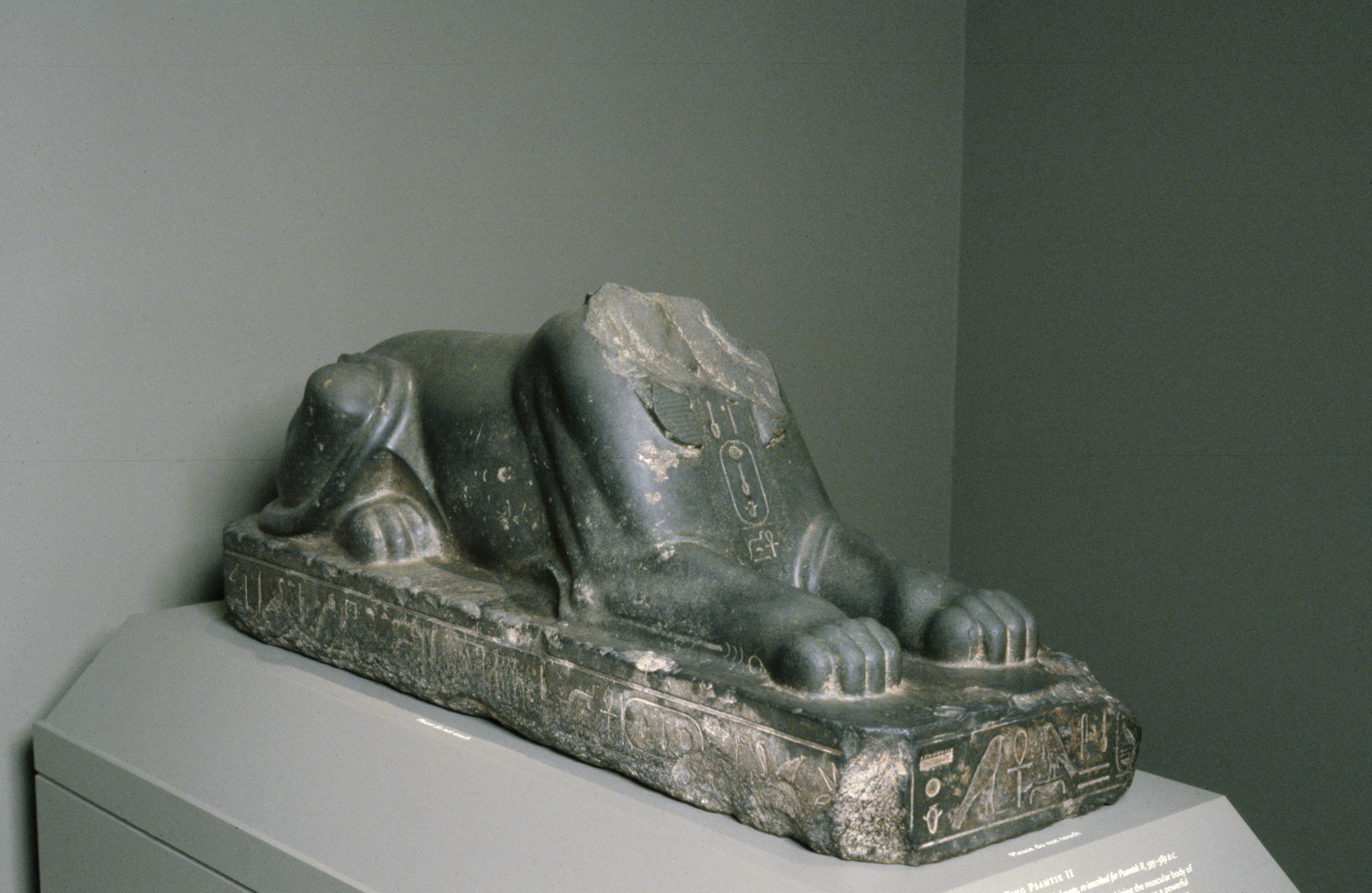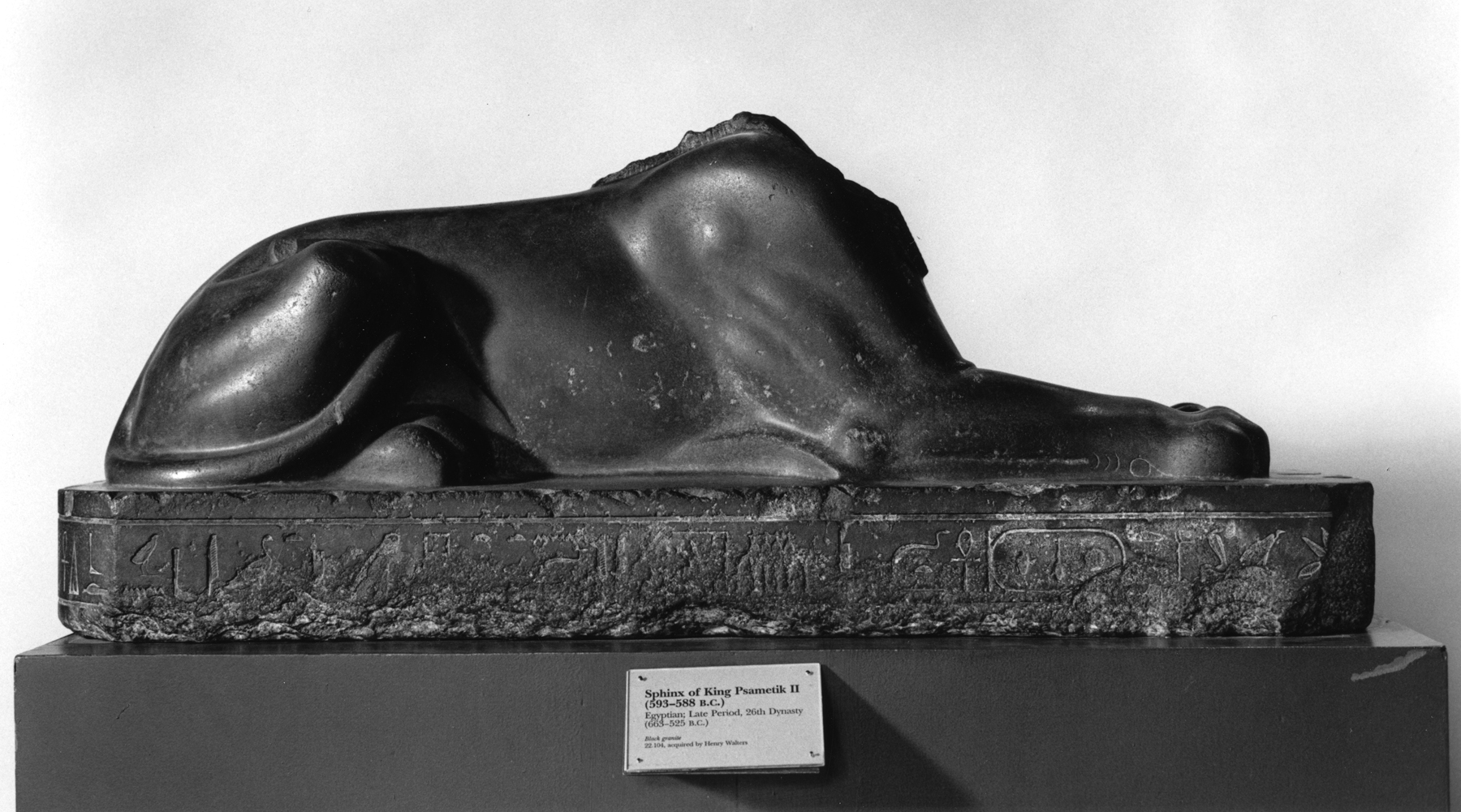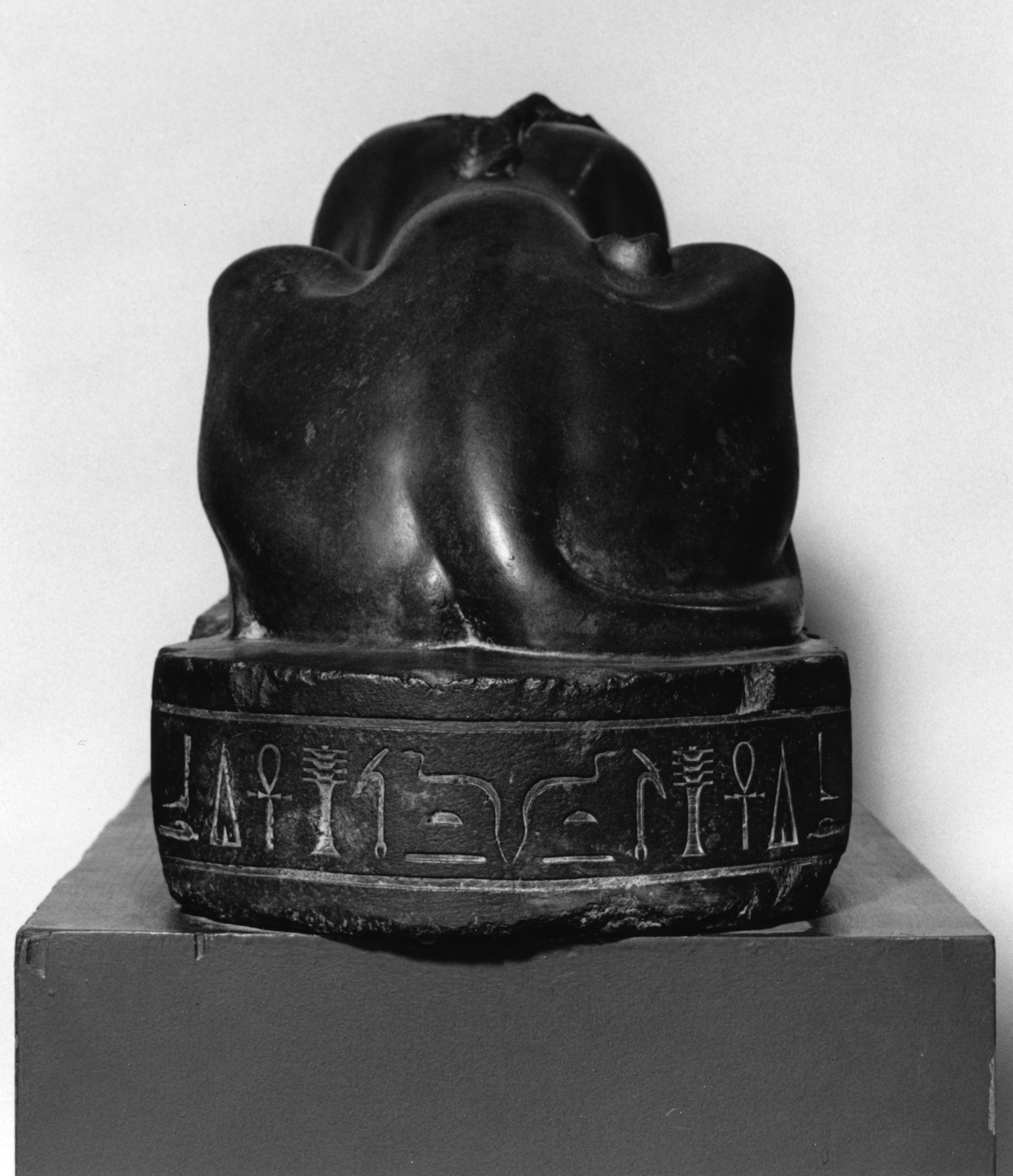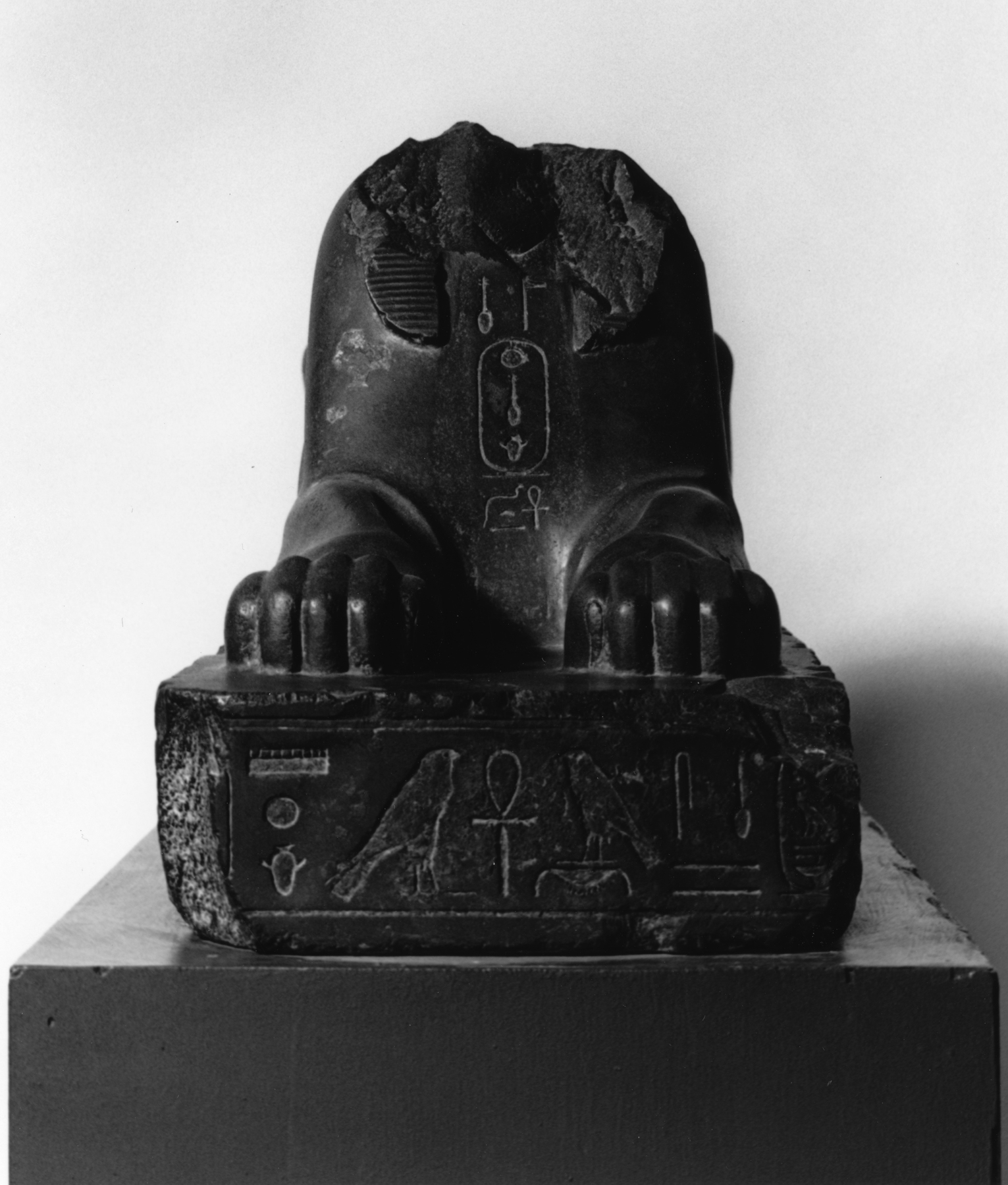Sphinx of King Psamtik II
(Ancient Egypt and Nubia )
Sphinxes served as temple figures. Combining the muscular body of a reclining lion with the head of a royal human, the sphinx was a powerful symbol of the ancient Egyptian concept of divine kingship. Although now headless, this sphinx retains part of its striped nemes head cloth, worn only by Egypt's monarchs and meant to represent a hooded cobra, a royal symbol. Originally created for another king, the sphinx's first inscription was replaced by one naming King Psamtik II.
Provenance
Provenance (from the French provenir, 'to come from/forth') is the chronology of the ownership, custody, or location of a historical object. Learn more about provenance at the Walters.
Dikran Kelekian, New York and Paris, [date and mode of acquisition unknown] [said to be from Lower Egypt]; Henry Walters, Baltimore, 1909, by purchase; Walters Art Museum, 1931, by bequest.
Conservation
| Date | Description | Narrative |
|---|---|---|
| 7/14/1967 | Treatment | cleaned |
| 6/24/1971 | Treatment | cleaned |
| 8/17/1998 | Examination | survey |
| 4/8/1999 | Treatment | examined for technical study; cleaned |
| 4/9/1999 | Examination | examined for exhibition |
Geographies
Egypt (Thebes) (Place of Origin)
Measurements
15 3/8 x 37 x 11 1/4 in. (39 x 94 x 28.5 cm)
Credit Line
Acquired by Henry Walters, 1909
Location in Museum
Accession Number
In libraries, galleries, museums, and archives, an accession number is a unique identifier assigned to each object in the collection.
In libraries, galleries, museums, and archives, an accession number is a unique identifier assigned to each object in the collection.
22.104










